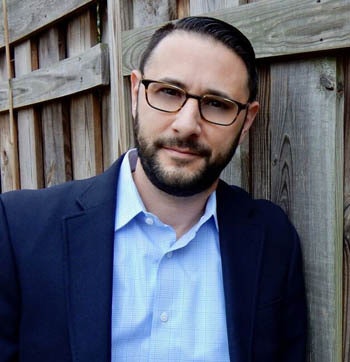Dr. Vincent Intondi not only propels meaningful discussion in the classroom, but he also creates space on campus for thoughtful conversation and solidarity.
During the four years that he taught at Seminole State College of Florida, news broke in nearby Sanford about the murder of 17-year-old Trayvon Martin. Intondi immediately knew that this event would forever be part of the African-American history he teaches. The activism that arose out of the tragedy abundantly demonstrated the connection between what students learn in the classroom and what goes on in the world.
 Dr. Vincent Intondi
Dr. Vincent IntondiHe thrived on teaching the diverse range of students at Seminole, and he took to heart the issues of undocumented students that made up a significant percentage of the student body. When he accepted his current position at Maryland’s Montgomery College’s Takoma Park/Silver Spring campus in 2013, he again found an extremely diverse student body and an interesting disconnect among African-American students and students from Africa.
He says that stereotypes exist on both sides. He recently received a grant through the Global Humanities Institute at Montgomery College to redo his African-American History Since 1865 course.
He wants students to “realize how they’re all connected through the lens of colonialism,” explains Intondi, who is the author of the book African Americans Against the Bomb: Nuclear Weapons, Colonialism and the Black Freedom Movement. “Students this semester are choosing artists, poets, musicians from two periods (of three): the Harlem Renaissance, the Black arts movement in the ’60s and the golden era of hip-hop1980–1992. They’re going to compare and contrast those artists, looking for influences and themes of Africa throughout.
“It’s been a really rewarding experience to see students who have never heard of groups like Public Enemy or realized there were people wearing African medallions in the 1980s then see the influences of somebody like Nikki Giovanni or Sonia Sanchez,” Itondi says. “They’re starting to realize how those connections have been there right along.”
Writing is an important part of his academic mission for all students in his African-American history, U.S. history and social history courses. He finds that many students have not been taught how to write at the college level, whether it’s term papers or essay exams. He not only assigns research papers but also teaches his students how to engage in scholarly writing, including how to do footnotes.
Teaching at a community college does not lessen Intondi’s expectations of his students. He keeps it just as rigorous as he would for students at a four-year institution. But the difference, he says, is that many community college students have challenges such as working full-time, childcare and other responsibilities. Those dynamics come into play when advising and mentoring students. He’s also mindful that for some students English is a second language and thus a challenge.
In his courses, Intondi doesn’t use textbooks, saying they are expensive and boring. He instead wants to give students relatable reading material that inspires them to read more. He says that many students have only learned history through a White-centric point of view, and he asks them to re-examine the narrative that they’ve been taught. Cultivating critical thinking is a priority as he is mindful that he is preparing many of the students to go on to four-year institutions.
“In my course about African-American history before emancipation, the first book my students read is Harriet Jacobs’ Incidents in the Life of a Slave Girl,” he says. “For most of my students, this is their first time reading a slave narrative. … I want them to be introduced to the perspective of what slavery was like for females. They devour a book like that, and there’s an amazing discussion in class about it.”
When teaching major points in American history, such as the dropping of the atomic bomb in World War II, he asks students to shift the perspective from the American pilots to the Japanese citizens who were impacted. He asks them to look at the Vietnam War from the perspective of the Vietnamese.
At Montgomery, he takes full advantage of the proximity to Washington, D.C., taking students to the National Museum of African-American History and Culture, where they can analyze exhibits through the lens of public history.
As soon as Intondi arrived at Montgomery College, he wanted to develop a Center for Black Studies. The college has a 2020 Strategic Plan, and two pieces of this plan are educational excellence and community engagement.
In the wake of the presidential election and the voiced concerns of Muslim and Hispanic students, the center evolved into the Institute for Race, Justice & Community Engagement. It launched in February, with Intondi as its director, and work has begun on Montgomery’s three campuses.
“The three main pillars are, [first], to literally on all three campuses provide a safe space for diverse students, who are all seeking equality, radical inclusion and justice, a place where they can meet, talk and feel safe,” he says. “The second is to provide all of the necessary resources to ensure that our students can achieve the promise — what others call closing the achievement gap.
“The third will be providing a hub for our students who want to become agents of change through community and civic engagement.”





















